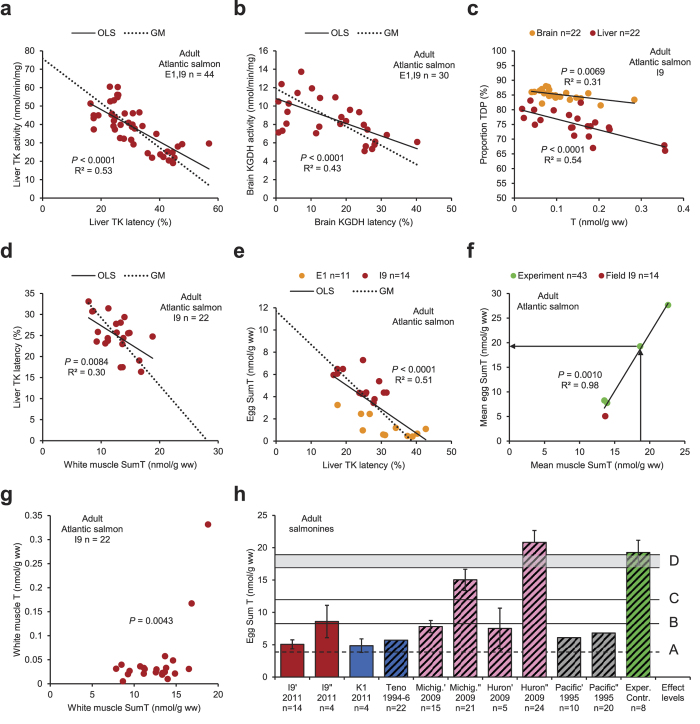Figure 5. Salmonines (Salmoninae).
(a–g) Atlantic salmon (Salmo salar). (a) Liver TK activity and latency in both sexes. (b) Brain KGDH activity and latency in both sexes. (c) Proportion TDP and T concentration in the brain and liver in both sexes. (d) Liver TK latency and white muscle SumT in both sexes. (e) Egg SumT and liver TK latency in females. (f) Mean egg SumT and mean muscle SumT in females from the field (red, this investigation) and experimental females (green, adapted from Fynn-Aikins et al.20). (g) The white muscle T concentration was low up to a white muscle SumT threshold of ca 17–19 nmol/g, where it started to increase. (h) Original data (plain bars) and literature data (striped bars, selection from Tables S5c,d) on egg SumT concentrations in mature female salmonines in the Northern Hemisphere. I9′, K1, River Teno, and experimental control: Atlantic salmon. I9″: sea trout (S. trutta). Lake Michigan’,”, Lake Huron’,”: lake trout (Salvelinus namaycush). Pacific coast’: Chinook salmon (Oncorhynchus tshawytscha). Pacific coast”: coho salmon (O. kisutch). (A) 3.9 nmol/g, threshold for mortality in the offspring; (B) 8.3 nmol/g, threshold for 20% reduced growth in the offspring24; (C) 12 nmol/g, threshold for liver TK latency in the parental females; and (D) 17–19 nmol/g, suggested threshold range for sublethal thiamine deficiency in the parental females and their offspring. • Bars: arithmetic means. Whiskers: 95% CI. OLS: ordinary least squares regression. GM: geometric mean regression.

